At The Art Nouveau Exhibition - To Appreciate What We Have Today
This Art Nouveau Exhibition was hosted by the Palace of Culture of Targu Mures, that is situated in the city center, next to the town hall and was built between 1911 and 1913. It has always served as home for art and culture, therefore different exhibitions are hosted there all the time.
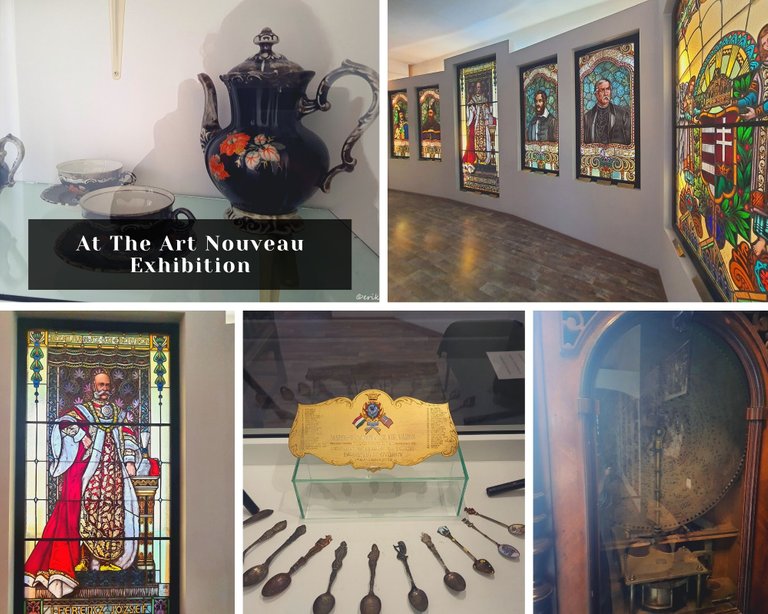
Art Nouveau is an international style of art, architecture, and applied art, especially the decorative arts, known in different languages by different names: Jugendstil in German, Stile Liberty in Italian, Modernisme català in Catalan, etc. In English it is also known as the Modern Style. The style was most popular between 1890 and 1910 during the Belle Époque period that ended with the start of World War I in 1914. It was a reaction against the academic art, eclecticism and historicism of 19th century architecture and decoration. It was often inspired by natural forms such as the sinuous curves of plants and flowers. Other characteristics of Art Nouveau were a sense of dynamism and movement, often given by asymmetry or whiplash lines, and the use of modern materials, particularly iron, glass, ceramics and later concrete, to create unusual forms and larger open spaces.
One major objective of Art Nouveau was to break down the traditional distinction between fine arts (especially painting and sculpture) and applied arts. It was most widely used in interior design, graphic arts, furniture, glass art, textiles, ceramics, jewellery and metal work. source
The exhibition offers a nice variety of objects from that era, that are not in use anymore, from small objects, to painted glass, postcards featuring old buildings and old musical instruments.
Bear with me as I will take you in a trip back in time as well as I will show you what life was once, so you can appreciate what we have today
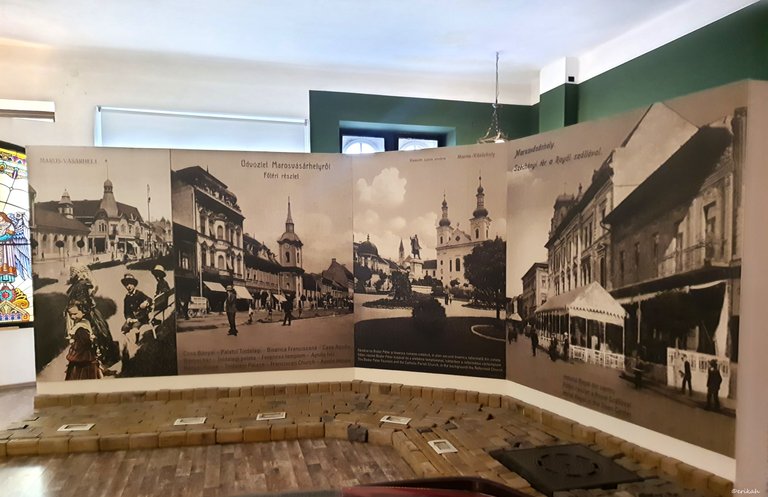
These postcards all date back to before the first world war, most likely
were issues between 1900 and 1910. These buildings, churches are still standing today.
To create the feeling of those times, from the entrance of the room you see magnified postcards of old buildings from the city center and to make it more real, there are cobbler stones on front of the all hosting the postcards. Many years ago asphalt was not known and the most used paving material. These yellow stones were used to pave the streets around 1907 or so, in the time of the Austro - Hungarian Monarchy.
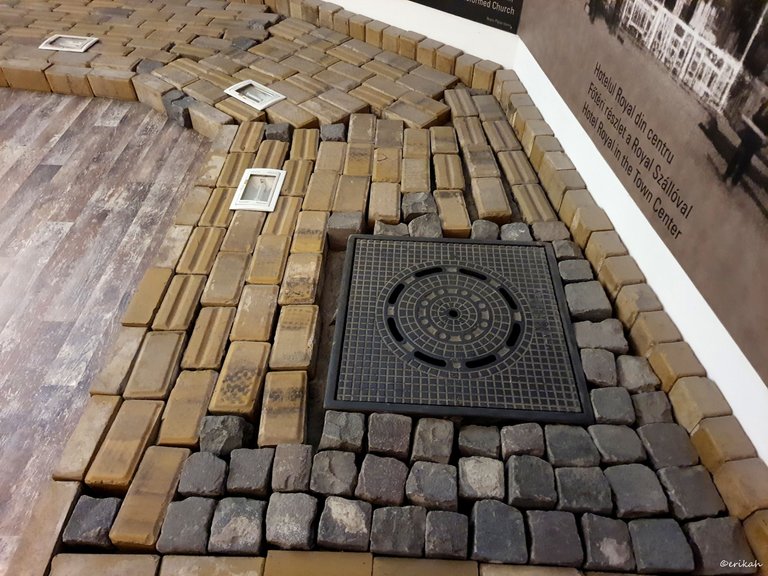
Today there's only one place where you can still find these yellow cobbler stones and that is the road that leads to the fortress or citadel.
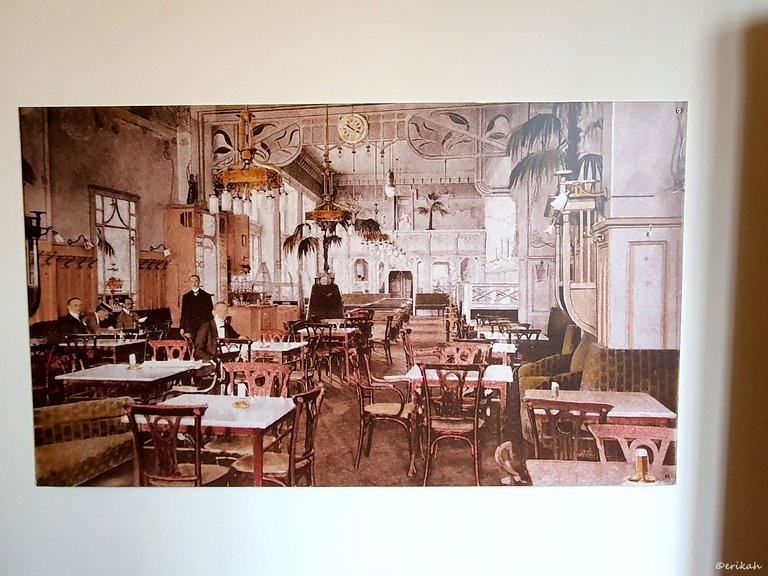
This is how a coffee house looked like at the beginning of the last century. Nobles, gentlemen used to go there on a daily bases to have a coffee, read thee newspaper and converse with the others. it was a social activity you didn't want to miss. I don't think it was forbidden for women but they sure were not welcome as you never see women at these places. It was most likely like a gentlemen club, where news was shared. I'm not sure where this one was, but must have been somewhere in the city center.
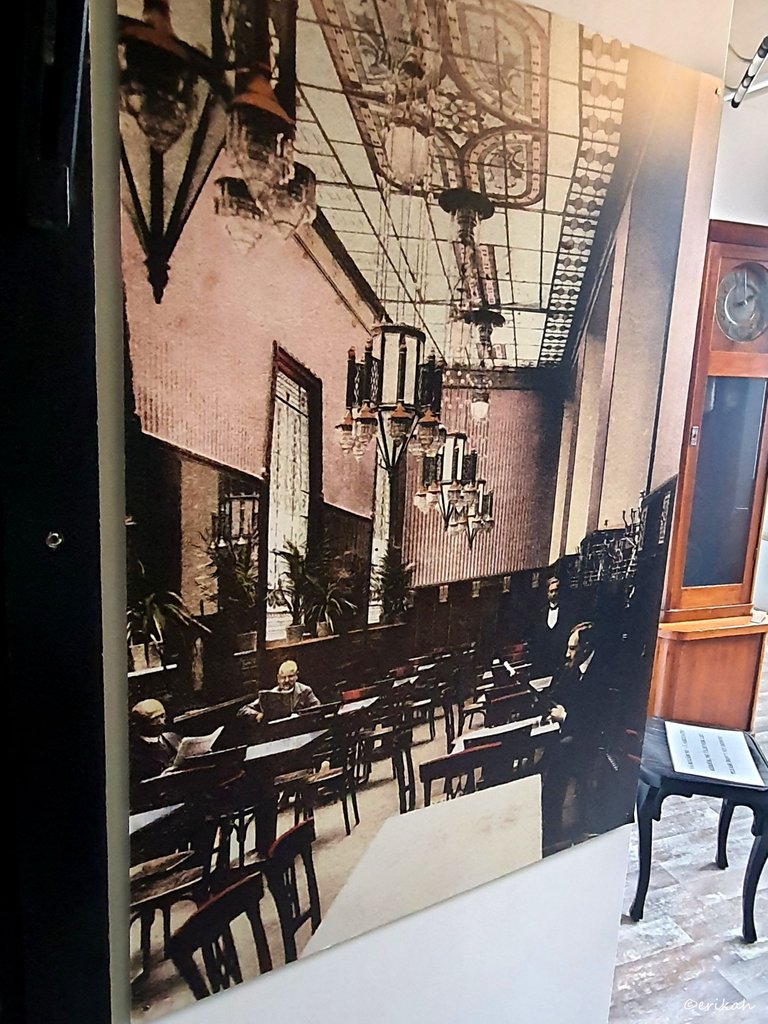
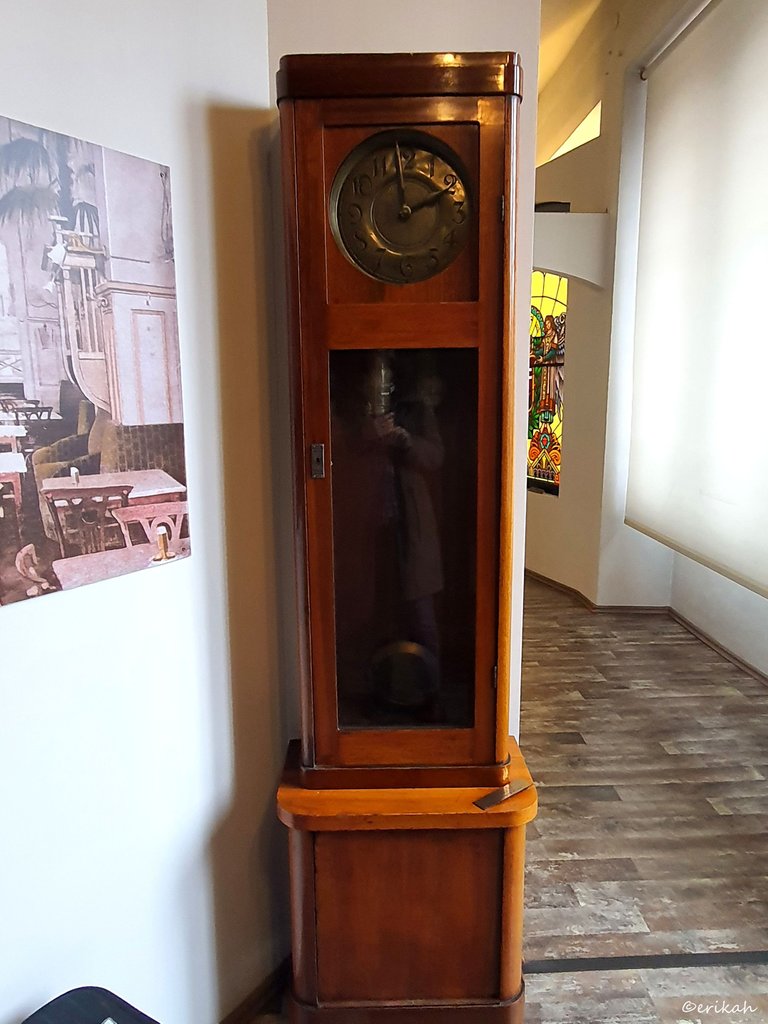
A stylish clock, that in those days was a must and served both as time teller as well as a nice piece of furniture. Back in those days a clock could be as big as a wardrobe with a very recorded outer case.
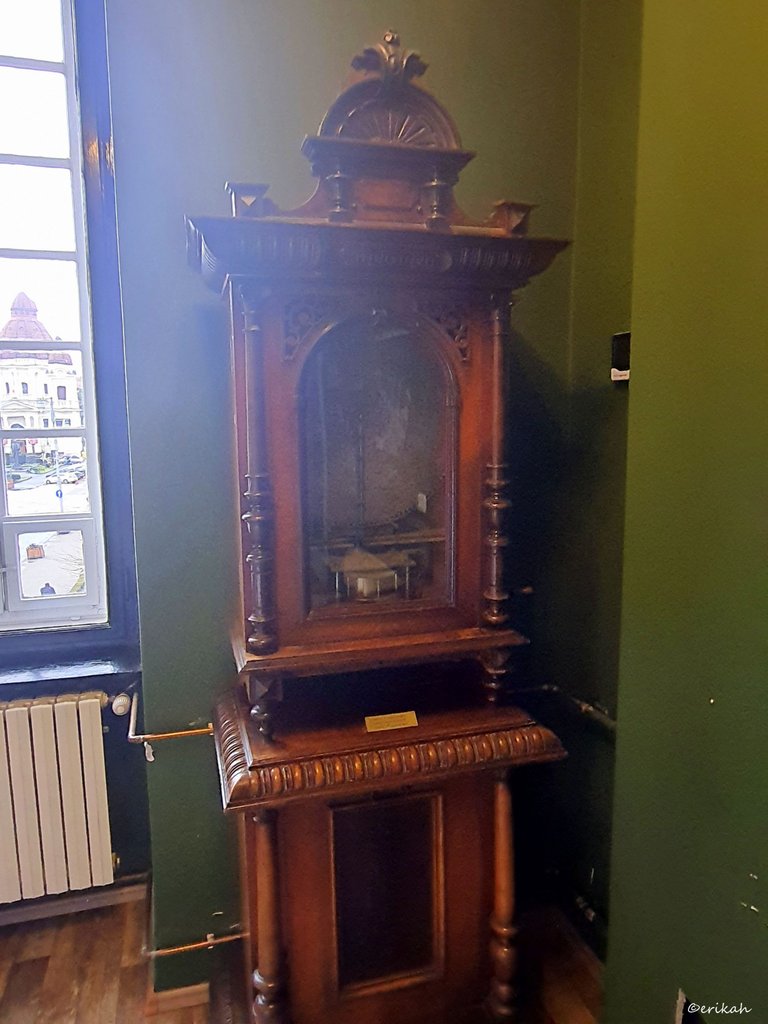
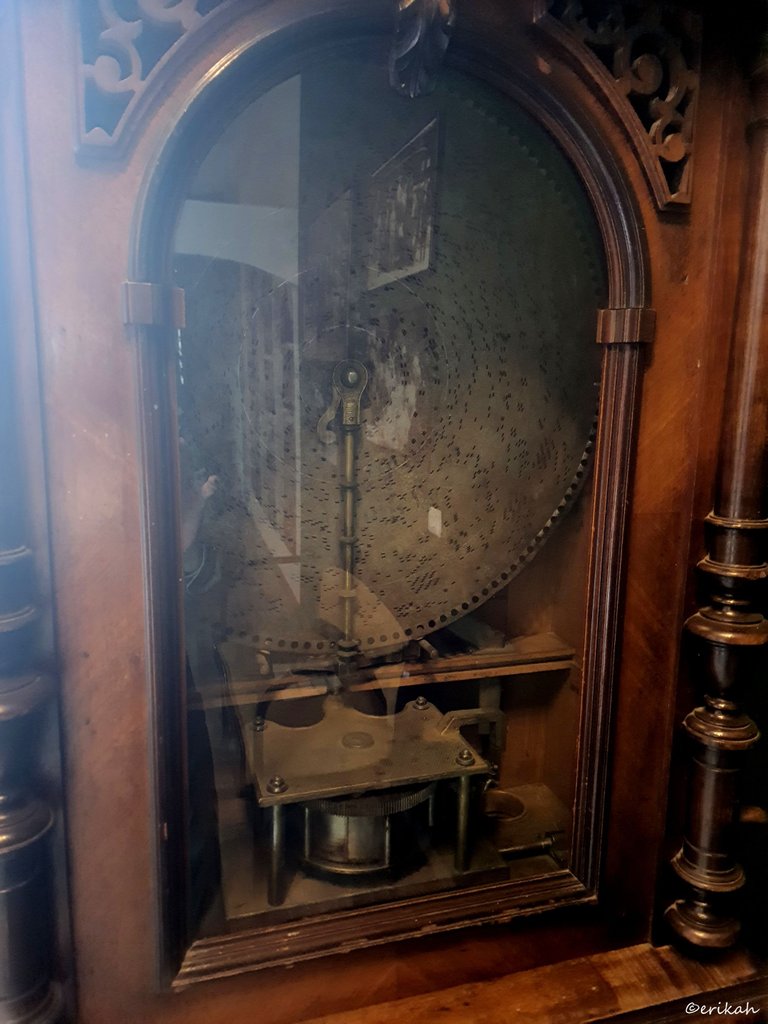
I need to apologize for the quality of these photos, the light was terrible and there was no room for a different angle, so I had to work miracles to be able to take these photos.
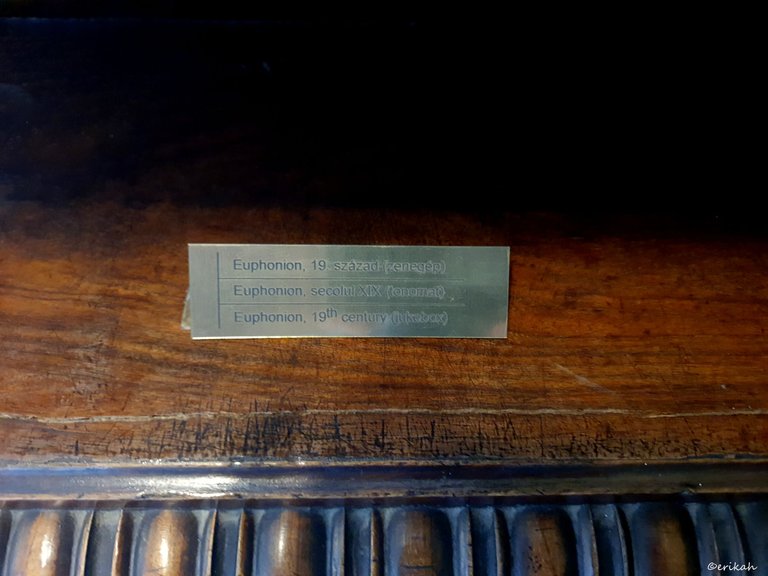
In case you're wondering, this is an Euphonion, from the 19th century. It is a jukebox that played music by reading that huge metal disc. I'm not sure if this was functional, but would have loved to hear the sound of it.
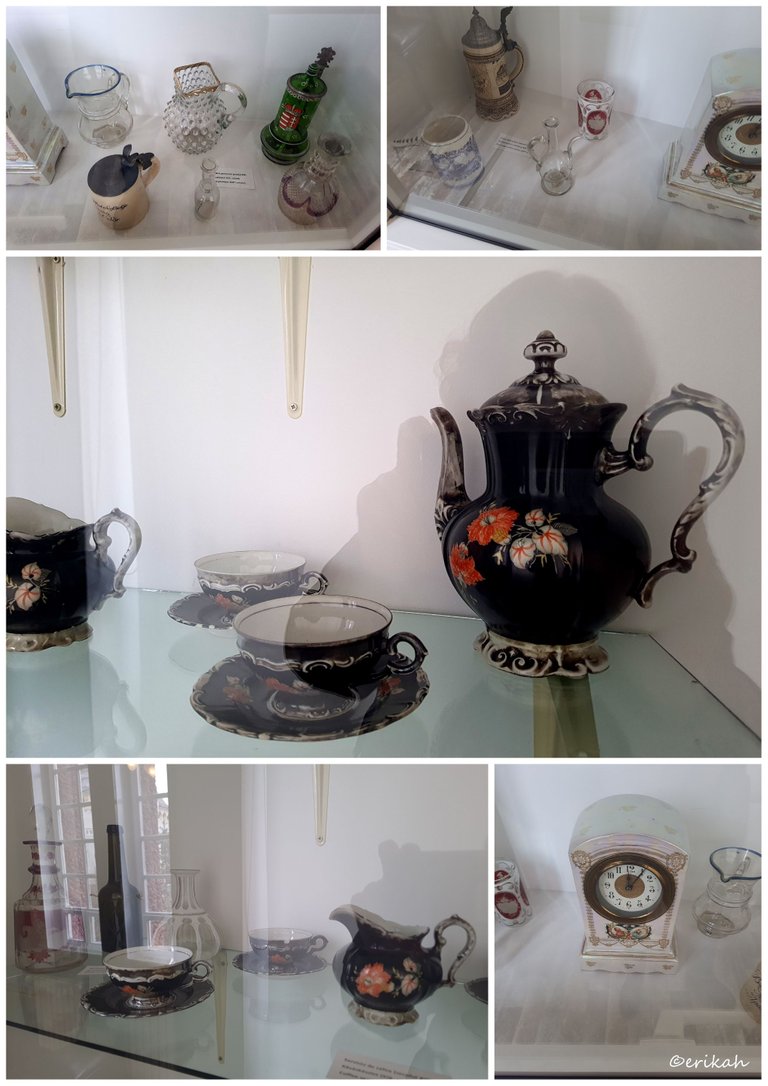
A few items from those times.
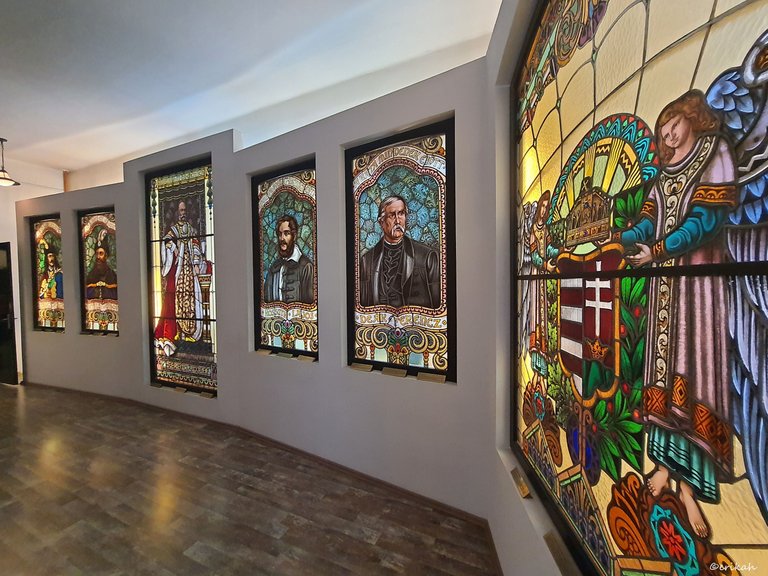
What I loved the most was the painted glass. Wherever I go, let it be church or museum, where there's painted glass, I'm happy. The Palace has a lot of painted glass, featuring famous people, like musicians, writers and politicians and this Art Nouveau exhibition also had a section dedicated to painted glass.
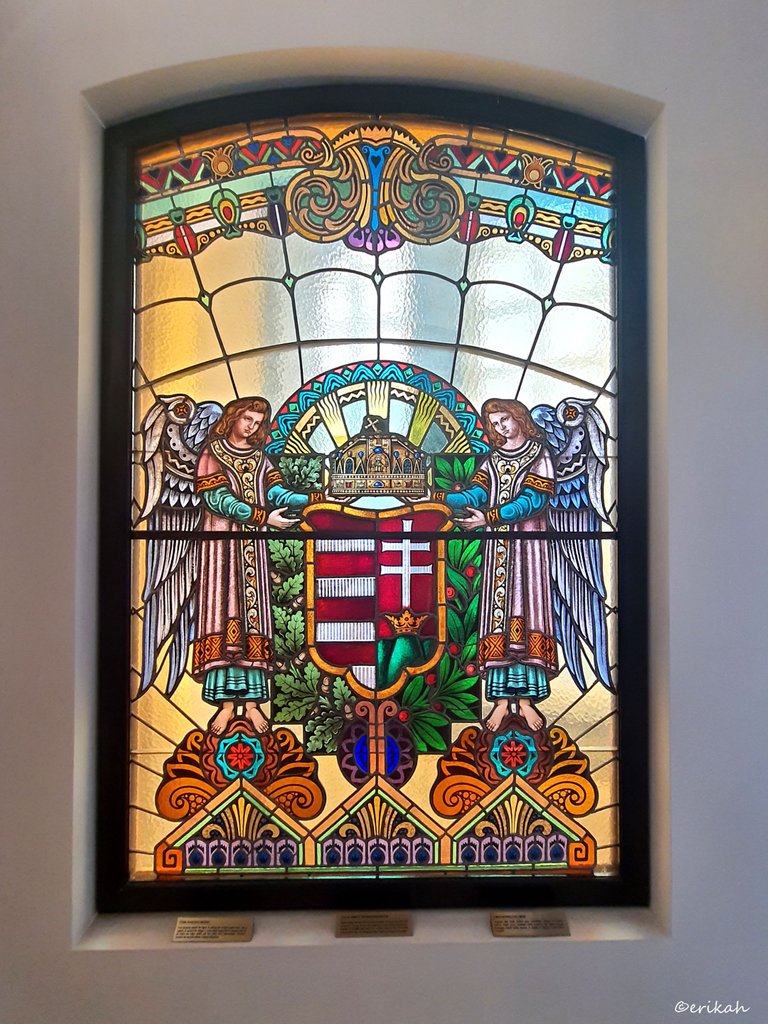
A religious scene, with angels holding the Hungarian crown and the crest of Hungary.
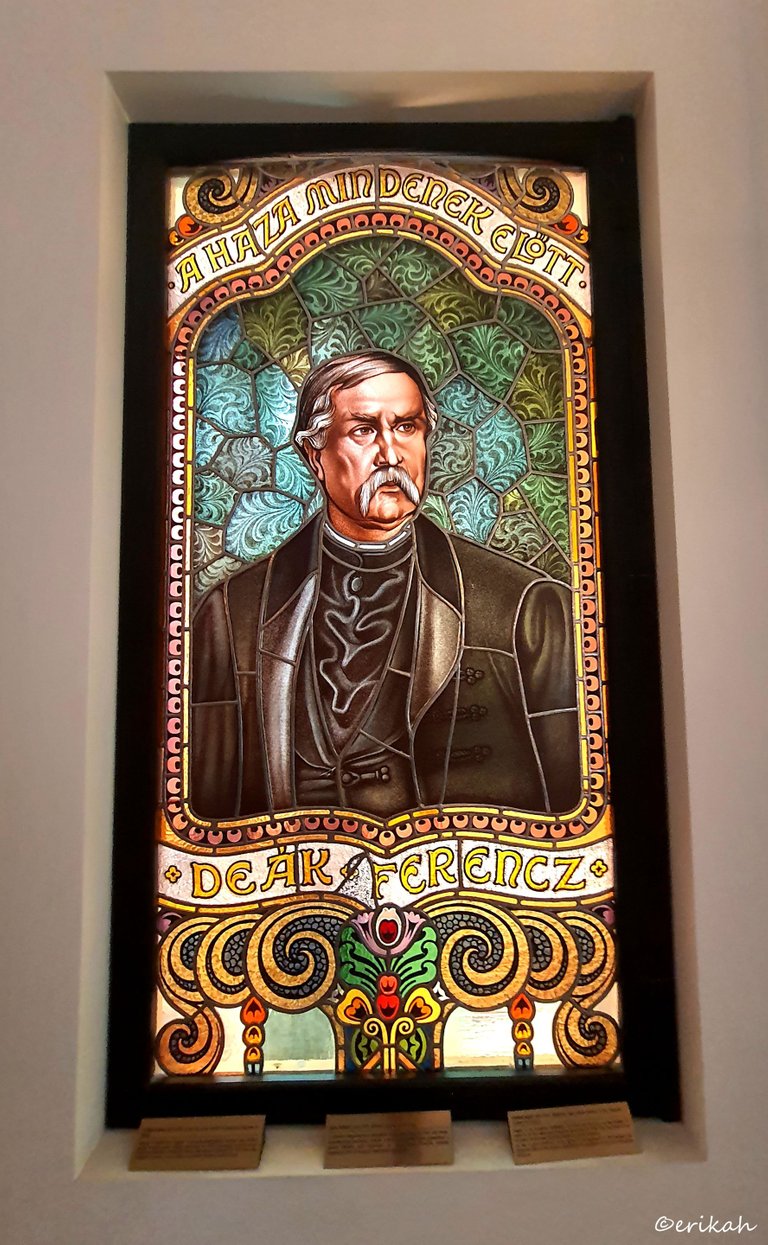
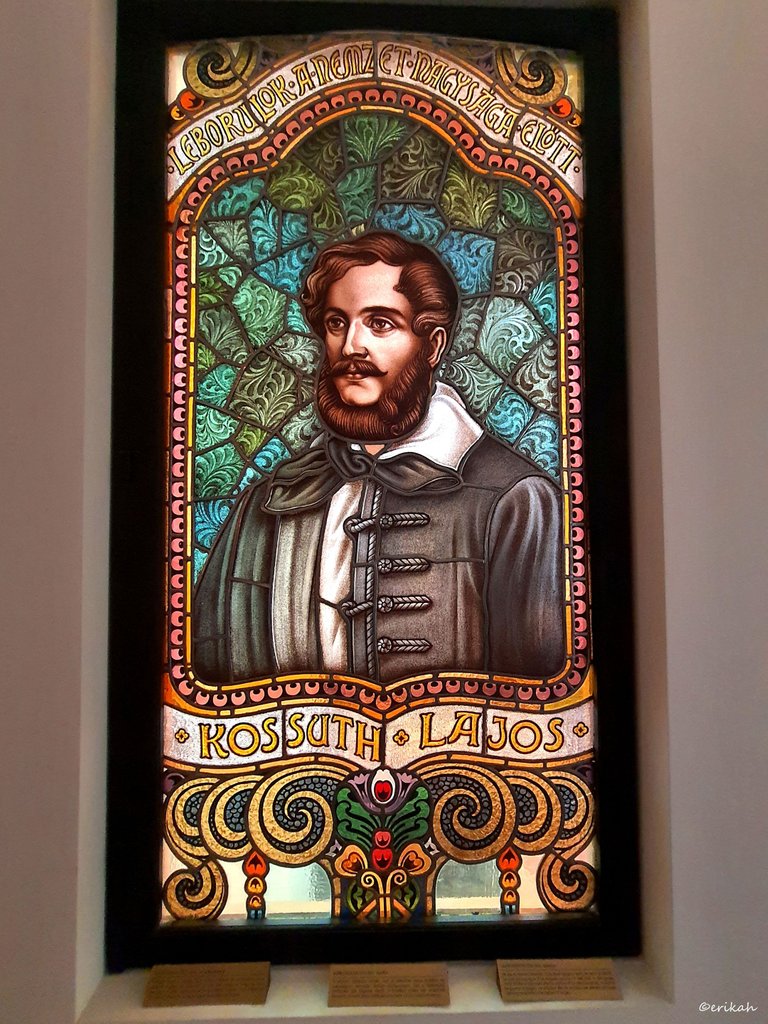
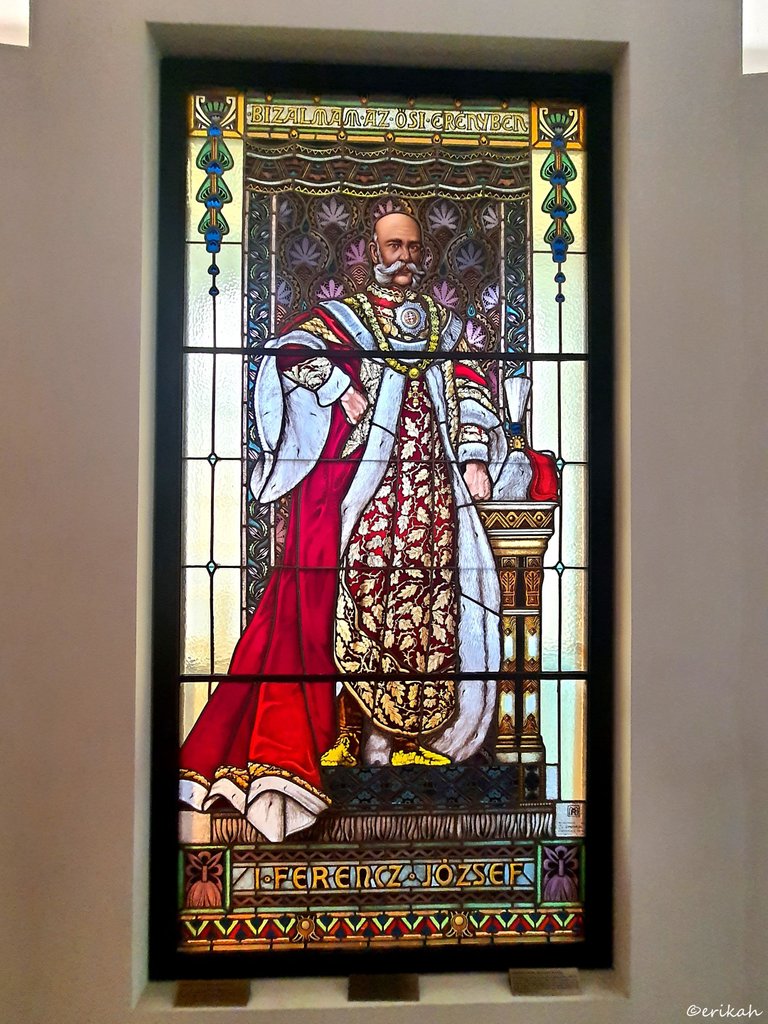
This is Franz Joseph I of Austria. It's little bit strange to see him in these clothes.
Franz Joseph I or Francis Joseph I (German: Franz Josef Karl, Hungarian: Ferenc József Károly, Croatian: Franjo Josip Karlo, Czech: František Josef Karel, 18 August 1830 – 21 November 1916) was Emperor of Austria, King of Hungary, King of Croatia, and Bohemia and the other state of Austro-Hungarian Empire from 2 December 1848 until his death. From 1 May 1850 to 24 August 1866 he was also President of the German Confederation. He was the longest-reigning ruler of Austria and Hungary, as well as the sixth-longest-reigning monarch of any country in history. source
I've seen his portrait so many times in so many places, in Vienna, in Budapest and Transylvania too and he is always portrayed in military uniform, due to his rank. These are his royal clothes and he doesn't have a crown.
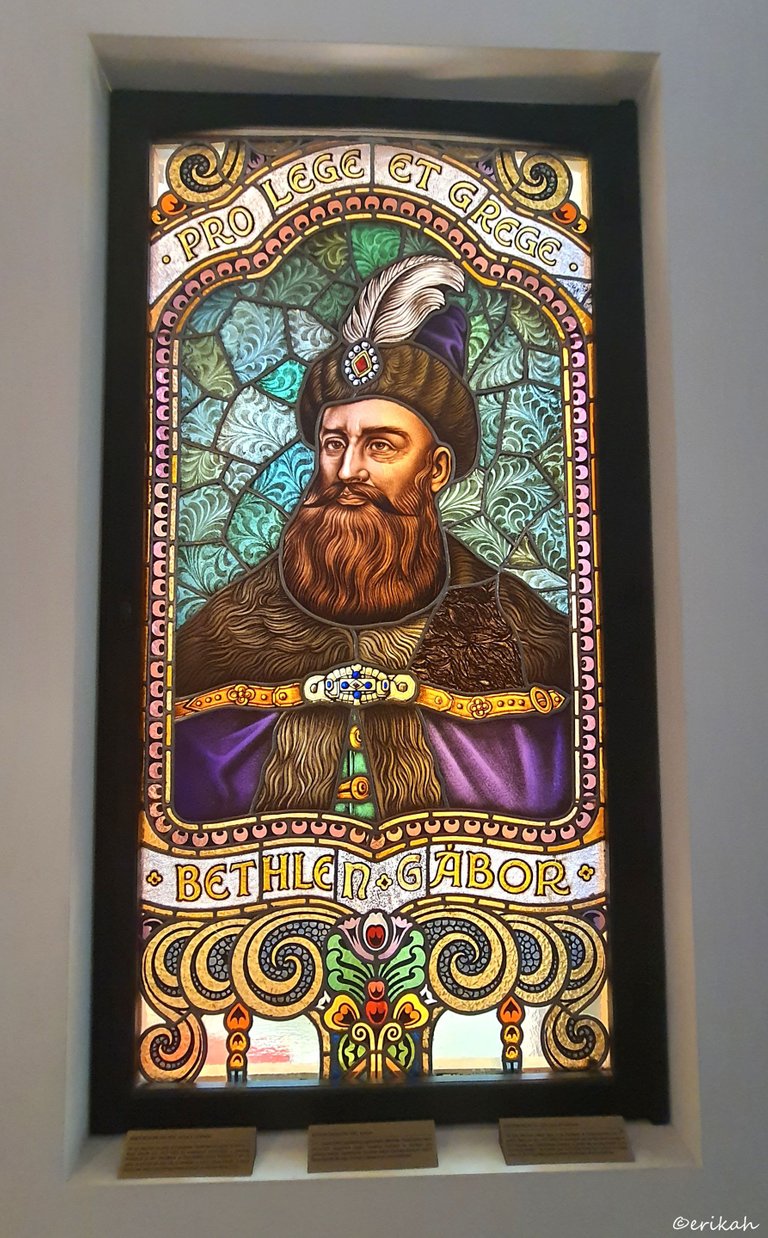
Gabriel Bethlen (Hungarian: Bethlen Gábor; 15 November 1580 – 15 November 1629) was Prince of Transylvania from 1613 to 1629 and Duke of Opole from 1622 to 1625. He was also King-elect of Hungary from 1620 to 1621, but he never took control of the whole kingdom. Bethlen, supported by the Ottomans, led his Calvinist principality against the Habsburgs and their Catholic allies. source

Francis II Rákóczi (Hungarian: II. Rákóczi Ferenc, 27 March 1676 – 8 April 1735) was a Hungarian nobleman and leader of the Hungarian uprising against the Habsburgs in 1703-11 as the prince of the Estates Confederated for Liberty of the Kingdom of Hungary. He was also Prince of Transylvania, an Imperial Prince, and a member of the Order of the Golden Fleece. Today he is considered a national hero in Hungary. source
These are some of the prominent figures of Hungary's history. Beneath each artwork, there are 3 plates with the name and the history of each person in 3 languages, Romanian, Hungarian and English, so you can learn on the go.
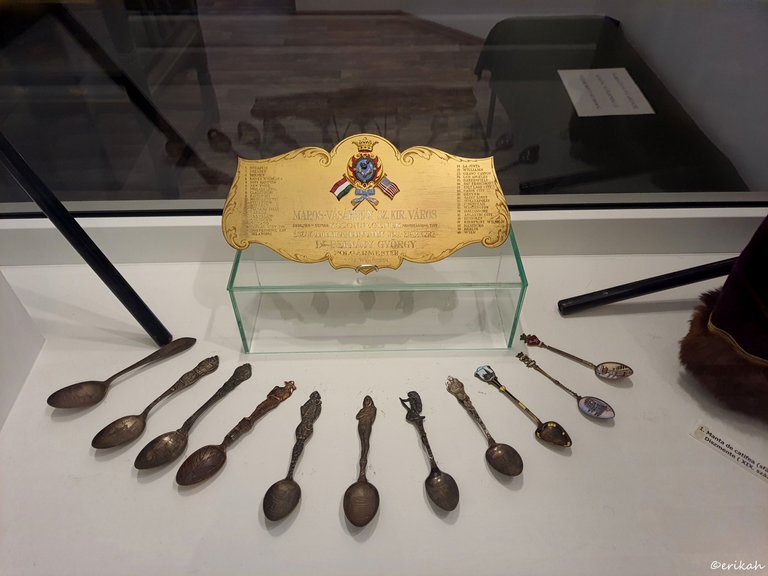
On display there's the memorial plate for a special event, that happened in 1911. György Bernády, the mayor of Marosvásárhely (Targu Mures) took a study trip to North America, on behalf of the city. There are 40 cities he traveled to, listed on the plate.
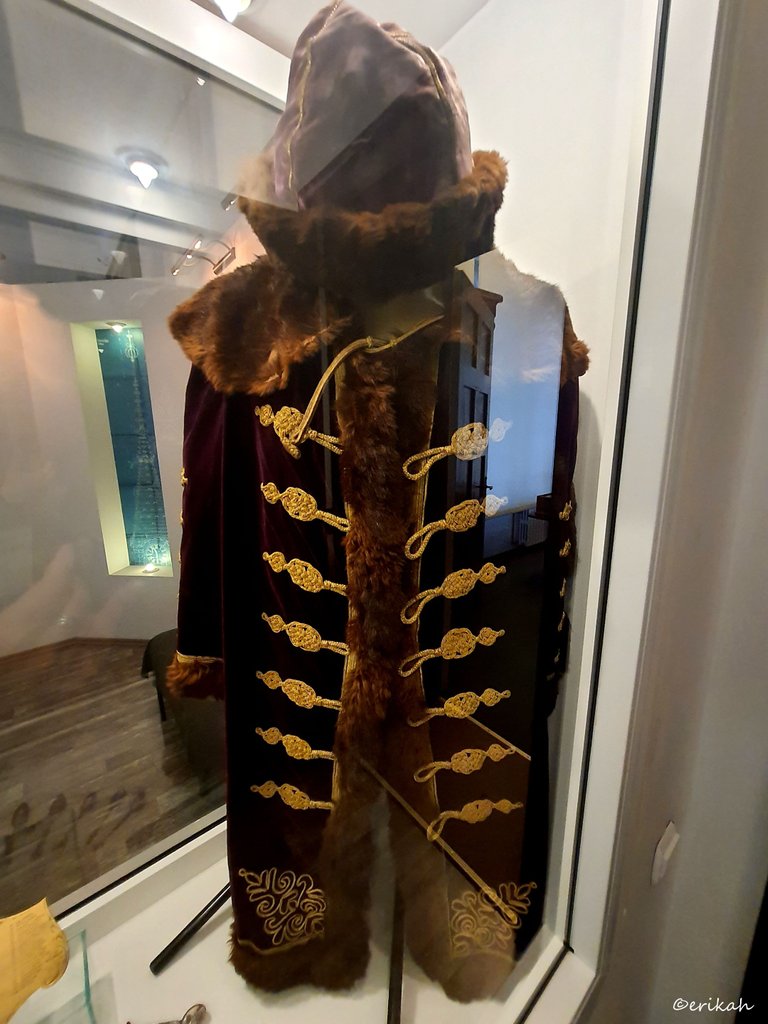
This is a traditional wear for Hungarian officers. What is interesting to note here is the knot.
Of Hungarian origin the "Vitézkötés", (in English "warrior's knot") evolved as an indicator of rank among hussars of the Hungarian army, and became part of the Hungarian noble attire since the 16th century. Later as other nations added hussars to their armies, they started to use the knot as well. The reason for this was that hussar regiments were often established by Hungarian nobles and some retained the name of their founder; for example the Ladislas Ignace de Bercheny. source
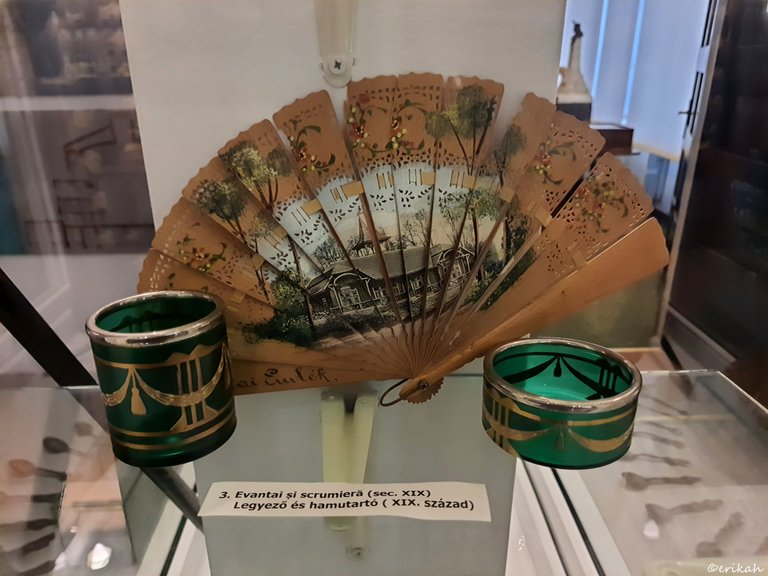
A fan and two ashtrays. I'm not sure the item is called fan in English, maybe there's a better word for it, I don't know. Both items are from the 19th century.
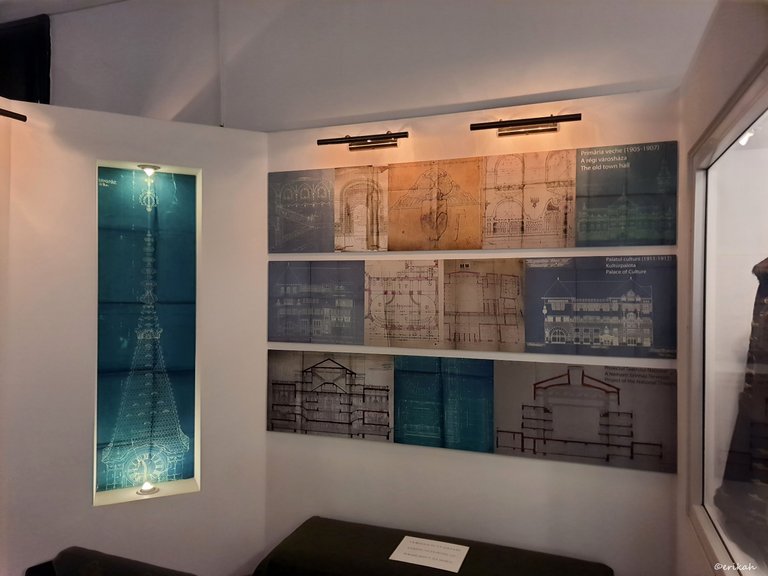
This was another interesting part of the exhibition. These are old blueprints. If you look back to how architecture planning was done centuries ago and compare the process with what we have now, you can see the difference. We have so many softwares today you can literally plan a building in a day, maybe sooner. Back then everything had to be done manually, calculated manually.
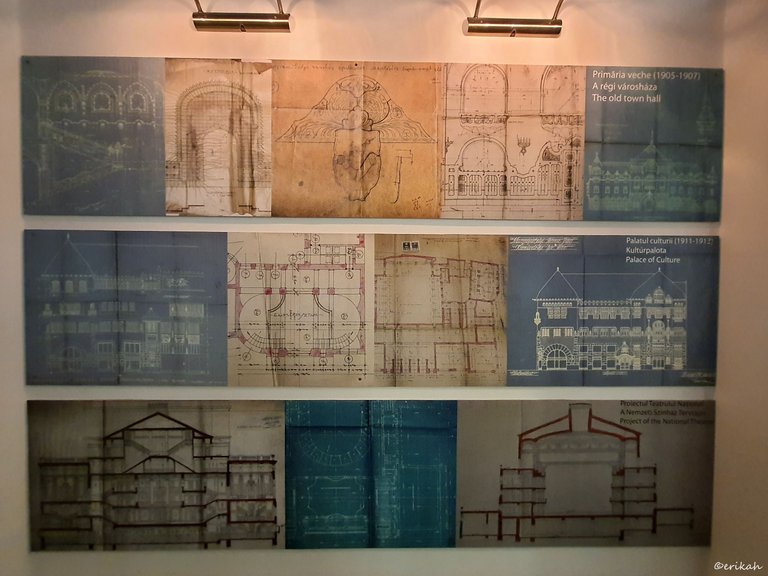
These are the blueprints of some famous buildings of Targu Mures, like the Palace of Culture and the old town hall.
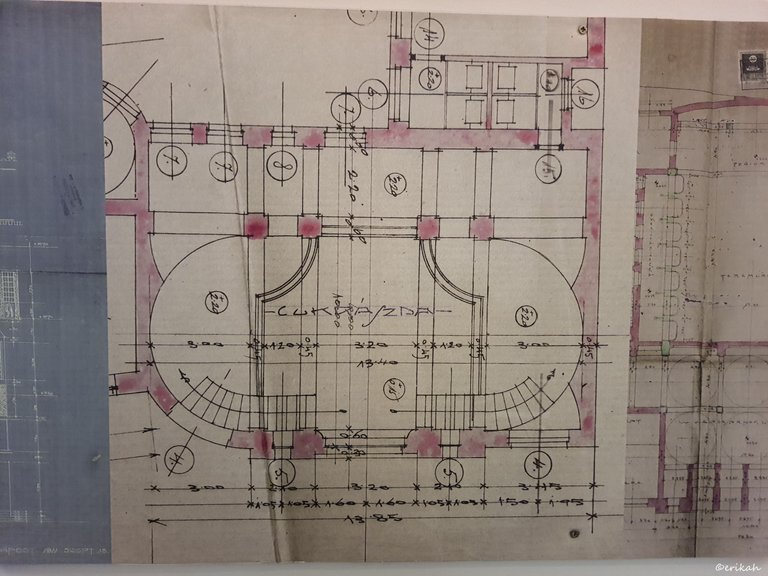
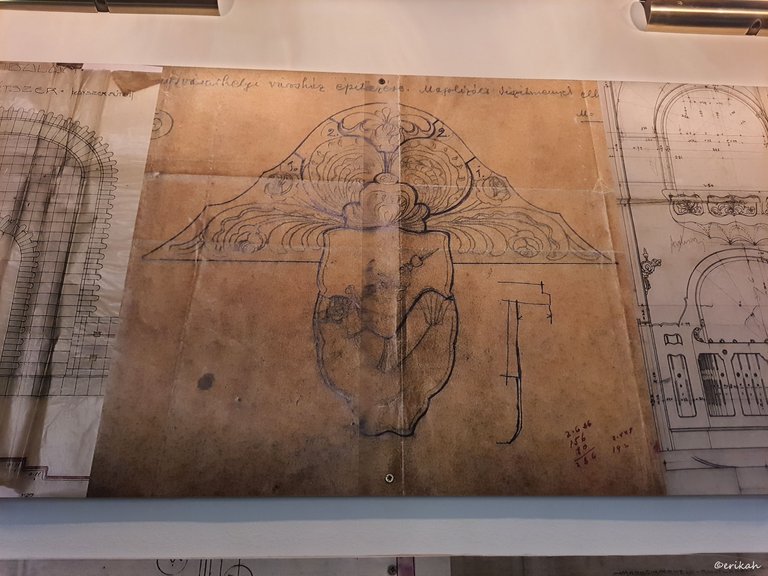

This is the blueprint of the Palace of Culture, it's just that back in the day it was called Palace of Public Culture Franz Josef.
Every time I am in a museum and looking at objects or paintings from the past, I am thinking of how fortunate we are to be living today. I could not imagine my life in another century with the knowledge I have today.
In this post I have showed a big clock, that is more like a piece of furniture in an old fashioned living room. Then I've shown you a jukebox that played music back in those days, just as big if not even bigger than the clock. Then I've showed you a coffee house, where gentlemen used to go every day to read the newspaper and have a conversation about politics and current matters.
We can have all that on our phone and even more. You can check the news as soon as they happen, you can check the time, also listen to music ans speak to whoever you like, even from the other side of the world. I bet if you would have told those gentlemen this will be possible in 120 or 130 years, they would have labeled you as moron or lunatic.

Congratulations, your post has been added to Pinmapple! 🎉🥳🍍
Did you know you have your own profile map?
And every post has their own map too!
Want to have your post on the map too?
Excellent publication @erikah demonstrates the love you have for culture and art, which is a sign of greatness, congratulations stumado.
What would we do without art and culture?
Dear @erikah , this is my appreciation about Culture, it refers to convictions, ideology and thought, which identifies a social group. For its part, Art allows the generation of artistic expressions, based on various symbols, techniques and materials, applying the creativity or inventiveness of the creator, that is, for life, culture and art are very essential, it reaffirms us in our peoples as a person. . Your enthusiasm for these vital issues as a native and resident of our peoples is appreciated. Successes Merry Christmas and a prosperous year 2022. Hugs.
I wish you a Merry Christmas and a Happy New Year!
Thank you dear @erikah(77) for your honorable visit, have a merry Christmas and a prosperous year 2022, full of many successes. Always at your service in Venezuela. I thank you, once again, for your nice visit.
Lovely.
Nice to see how these art exhibitions reflect the culture and history.
I couldn't agree more. I love these exhibitions.
I love art n culture... tnx for sharing with the hives community
Me too. Thanks for dropping by.